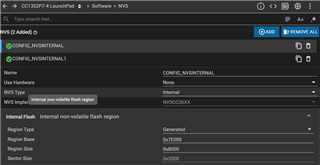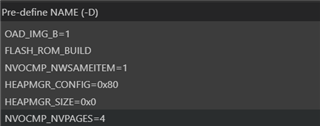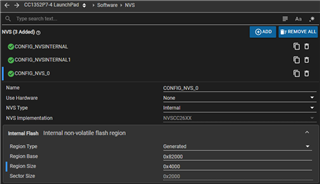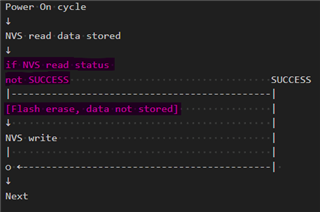Other Parts Discussed in Thread: SYSCONFIG, UNIFLASH
Tool/software:
Hi,
I would like to erase multiple customer-specific NV (non-volatile) IDs approximately 100 entries totaling around 1 KB. However, the available OSAL SNV API only provides functions for reading and writing individual items.
To work around this limitation, I increased the NV storage size to 0x8000 and set NVOCMP_NVPAGES to 4. The intention is to allocate Customer's NV IDs to NV pages 2 or 3, allowing for erasure of these entries by erasing an entire page at once.
Could you please advise on the feasibility and best practices for this approach?
SDK: simplelink_cc13xx_cc26xx_sdk_8_30_01_01


Best regards,
Bank







